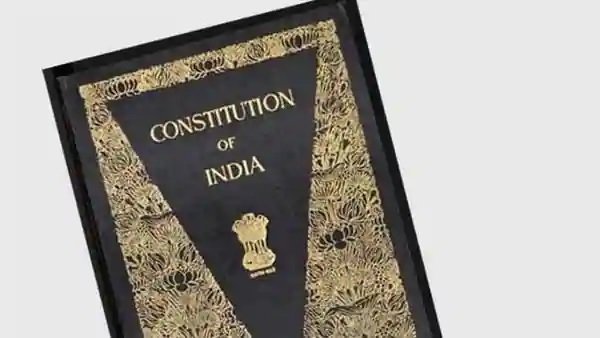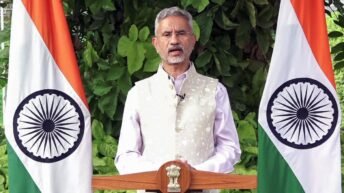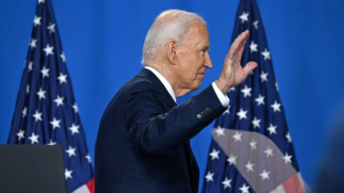|
Listen to article
Getting your Trinity Audio player ready...
|

The birth of a new democratic establishment is recorded in the text of a supreme law, which is referred to as the “Constitution”. The assertion that a constitution acts as a unifying document in countries with heterogeneous populations lies at the core of the constitution-making process. It answers to some extent the question as to why a Constitution is needed. It can be discerned here that any constitutionally institutionalized system of governance or rather any constitution itself is introduced and installed for some specific ‘foundational purposes.’
The objective of framing a constitution may emerge out of the contemporary requirement in international law for the recognition of a State, which makes the existence of the constitution a necessary precondition for recognition of the State by other States. The need for a constitution may also be felt for prescribing rights or assigning duties to citizens or for allowing the governmental institutions to exercise legitimate power within the constraints of the Constitution. A constitution may also seek to ensure uniform lawful governance throughout the nation and/or for the achievement of constitutional goals or ideals.
An argument can even be put forth that the constitution’s purpose is to form the state, i.e. only a constitution officialises the status of a territory as a ‘State’ or that it embodies the nation’s existence as a ‘liberated, independent state’. It may even be treated as an instrument for epitomizing the expression of unity in nations which have a diversedemography. The renowned jurist Mark Tushnet has acknowledged the necessity of a constitution in countries with heterogeneous demography and has observed as follows, ‘In nations with heterogeneous populations, which are now at an increasingly large proportion of the world’s nations, a constitution can serve as an expression, perhaps the only one available, of national unity.’
The need for a constitution may also be felt for prescribing rights or assigning duties to citizens or for allowing the governmental institutions to exercise legitimate power within the constraints of the Constitution.
Due to colossal migration flows in recent decades, cultural heterogeneity has vastly increased. Cultural heterogeneity, which has become a common feature of States in the 20th and 21st century, carries with it its own bundle of problems. Conflicts between minorities and majorities, the rise of jurisprudence to affirm and protect minority rights, the irruption of international law in this arena, are some of the most prominent highlights of the last decades. Cultural and religious heterogeneity due to migration was further accelerated after the European Industrial Revolution and the advent of globalisation.
In many modern States, various social and religious groups are ideologically estranged or opposed and hence, they feel a compulsive need to identify some common ground which would facilitate peaceful co-existence. That common ground they find in the Constitution and thus, the Constitution functions as a unifying document.
The homebred notion of ‘unity in diversity’ is sustained not merely by the presence of a Constitution, but due to the age-old tradition of welcoming cultures, and respect of all belief systems.
In some countries like India, invaders who ruled the landmass for centuries brought with them their religion and cultures. There is also evidence of large-scale religious conversions. Unlike in Europe, in the case of India, migration is not the prominent reason for the prevalence of religious heterogeneity. It is argued that though religious heterogeneity is prevalent in India, the “unifying” function of the Constitution is not entirely relevant in the Indian context. It is not the constitution but the cultural ethos of this country that ensures the generally peaceful coexistence of different religious groups. The homebred notion of ‘unity in diversity’ is sustained not merely by the presence of a Constitution, but due to the age-old tradition of welcoming cultures, and respect of all belief systems.
India has always been a melting pot of diverse cultures, religious practices and ways of worship. Be it Shaivite-Vaishnavite conflicts or the Dvait-Advait issue, the clashes between contrasting, variegated social groups in this country have always been harmoniously settled without tearing down the very identity of the nation’s civilizational heritage. India is home to all the major religions of the world. After witnessing this overwhelming religious heterogeneity, one might wonder- How is this nation able to sustain such a diverse citizenry? How exactly does India remain one? Does India owe its unity in this diversity to a seventy-year-old Constitution?
After studying and accounting for the inherent secularism and the accommodating nature of India, it would be evident that the principles that have been held sacrosanct by the various Indic belief systems are greatly responsible for the unity prevalent in the country.
India has faced a constant onslaught of foreign invasions and external aggressions, but the courteousness embedded in the hospitality of its people has given this holy land a unique quality as a welcoming home to the immigrants who decided to stay back. Over time, not only the Indic faith systems but also the believers of faiths foreign to this land, such as Jews, Zoroastrians have been accommodated and have become part of its social structure without losing their respective identities and traditions. After studying and accounting for the inherent secularism and the accommodating nature of India, it would be evident that the principles that have been held sacrosanct by the various Indic belief systems are greatly responsible for the unity prevalent in the country.
India was a unified nation before the Indian Constitution was adopted and it will continue to remain one notwithstanding the existence or non-existence of the same. Secularism is ingrained in the ethos of this nation. Differences between persons on the ground of faith or belief have always been tolerated. It is a hereditarily indoctrinated regimen of adhering to an inherently inclusive value system. The famous shloka, “EKAM SAT VIRPAHA BAHUDHA VADANTI” states that the Truth is one, and the wise perceive its facets in different fashions. The multitudinous branches of faith and the variety of religious texts and tradition are what allows Hinduism to be an all-encompassing, all-embracing and all-inclusive ‘way of life’.
The multitudinous branches of faith and the variety of religious texts and tradition are what allows Hinduism to be an all-encompassing, all-embracing and all-inclusive ‘way of life’.
This strong unity, even in the multiplicity of deities, is again evident from the verse, “AKASHAT PATITAM TOYAM YATHA GACHATI SAGARAHA, SARVA DEV NAMASKARA KESHAVAM PRATI GACCHATI”, which is translated as- Analogous to the way that all the raindrops falling from the sky ultimately meet their end in the ocean, the worship of any divine being conclusively reaches only one Supreme God. A similar shloka appears in the Shiv Mahima Strotam, which is translated as follows, ‘just as the sea is the final resting place for all the tributaries which may flow zigzag and may hail from whichever direction, there are different practices for reaching the greatest truth that is based on different Vedas, and people are free to choose the one which is best for them according to their aptitude.’These scriptures clearly highlight the presence of an inherently secular ethos, by virtue of which it is easy for the Indian populace to harmoniously reconcile social discrepancies and shelter a heterogeneous social construct without doing away with some of the diametrically opposite minority belief systems.






Add comment